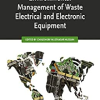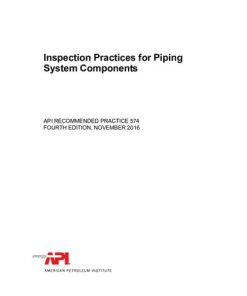Petroleum Reservoir Management Considerations and Practices 1st Edition by Ashok Pathak ISBN 9780367519223 0367519224
$50.00 Original price was: $50.00.$25.00Current price is: $25.00.
Petroleum Reservoir Management Considerations and Practices 1st Edition by Ashok Pathak – Ebook PDF Instant Download/Delivery: 9780367519223 ,0367519224
Full download Petroleum Reservoir Management Considerations and Practices 1st Edition after payment

Product details:
ISBN 10: 0367519224
ISBN 13: 9780367519223
Author: Ashok Pathak
Petroleum Reservoir Management Considerations and Practices 1st Edition Table of contents:
1 Petroleum Reservoir Lifecycle
1.1 Introduction
1.2 Life Cycle
1.2.1 Exploration Phase
1.2.2 Delineation Phase
1.2.3 Development Phase
1.2.4 Production Phase
1.2.5 Abandonment or Decommissioning Phase
1.3 Phasing of Development
1.3.1 Primary Recovery
1.3.2 Secondary Recovery
1.3.3 Tertiary Recovery
1.4 Thermal Recovery
1.5 Nonthermal Methods
1.5.1 Chemical Floods
1.5.2 Gas Injection Methods
1.6 Hydrocarbon Resource and Reserves
1.7 Reserves Categorization
1.8 Uncertainty and Risk in Development Projects
1.9 Summary of Reserve Estimation Methods
1.10 Reservoir Management and Development Planning
2 Operating Arrangements and Reservoir Development Objectives
2.1 Introduction
2.2 Oil and Gas Reserves Ownership and Control
2.2.1 Ownership In-Place Theory
2.2.2 Non-Ownership Theory
2.2.3 Qualified Ownership Theory
2.2.4 Ownership of Strata Theory
2.2.5 Servitude Theory (Profit a’ Prendre)
2.3 State Ownership of Oil and Gas
2.4 Oil and Gas Ownership Rights in the Seawaters
2.5 Value of Vision and Mission Statements of E&P Companies
2.6 Private and Public Sector Oil Companies
2.7 Examples of Vision and Mission Statements of Oil Companies
2.8 Public Sector NOCs
2.8.1 Saudi Aramco
2.8.2 China National Petroleum Corporation
2.8.3 Petróleos de Venezuela S.A.
2.9 Private Sector, Large Size Public Limited IOCs
2.9.1 Exxon Mobil
2.9.2 Royal Dutch Shell
2.9.3 British Petroleum
2.10 Private Sector, Small-Size Public Limited Companies
2.10.1 Anadarko
2.10.2 Apache Petroleum
2.10.3 Japan Exploration Petroleum Company
2.11 General Comments on the Vision, Mission, and Values of the Companies
2.12 Effect of Operating Company’s Strengths on Reservoir Management
2.13 Commercial Agreements
2.13.1 Concessions
2.13.2 Joint Ventures
2.13.3 Production-Sharing Agreements or Production Sharing Contracts
2.13.4 Service Contracts
2.14 Reservoir Development Objectives & Early Planning Considerations
2.14.1 Management Questions and Objectives
2.14.2 Conceptual Development Plan
2.14.3 Initial Development Plan
2.14.4 Mid-Term Development Plan
2.14.5 Final Development Plan
3 Reservoir Management Requirements
3.1 Introduction
3.2 Significance of Crude Oil
3.3 Oil and Gas Business Environment
3.3.1 Internal Factors
3.3.2 External Factors
3.4 International Monetary System
3.5 Reservoir Management Framework
3.6 Reservoir Management Requirements
3.6.1 Rate and Recovery Management
3.6.2 Project and Cost Management
3.6.3 Technology Management
3.6.4 Risk Management
3.7 Reservoir Management Framework
3.7.1 Development of Multiple Stacked Reservoirs
3.7.2 Well Allowables
3.8 Impact of Reservoir Management
4 Significance of Reservoir Health and Its Impact on Reservoir Performance
4.1 Introduction
4.2 Reservoir Drive Mechanisms
4.2.1 Solution Gas Drive Reservoirs
4.2.2 Gas Cap Drive Reservoirs
4.2.3 Water Drive Reservoirs
4.2.4 Combination Drive Reservoirs
4.3 Reservoir Fluid Types and Phase Changes
4.4 Concept of Reservoir Health and the Need for Quantitative Measures
4.5 Reservoir Health Indicators (RHIs)
4.5.1 Oil Rate
4.5.2 Producing GOR
4.5.3 Water Cut
4.5.4 Reservoir Pressure Vis-à-Vis Bubble Point Pressure
4.5.5 Fluid Saturations
4.5.6 Sweep Efficiency
4.5.7 Reservoir Souring
4.6 Factors Affecting Production Rate
4.6.1 Partial Penetration
4.6.2 Formation Damage
4.6.3 Formation Collapse
4.6.4 Paraffin or Asphaltenes
4.6.5 Scales and Precipitates
4.6.6 Emulsions
4.6.7 Mechanical Failures
4.6.8 Corrosion
4.7 Significance of Pressure Maintenance to Reservoir Health
4.7.1 Timing of Pressure Maintenance
4.7.2 Water Injection Requirement
4.7.3 Source of Injection Water
4.7.4 Water Quality Needed to Maintain Injectivity
4.7.5 Injection Pressure Requirement
4.7.6 Injection Patterns
4.7.7 Well Design and Construction
4.8 Corrective Measures for Restoration of Reservoir Health
4.9 Assessment of Health by Reservoir/Well Health Indicators
4.10 Impact of Poor Health on Reservoir Management
5 Reservoir Management Policy Framework
5.1 Introduction
5.2 Elements of Reservoir Management
5.2.1 Organization
5.2.2 Capability
5.2.3 Policy
5.2.4 Governance
5.3 Typical Governance Model of an E&P Company
5.4 Reservoir Management Policy Issues
5.4.1 Petroleum Exploration & Production
5.4.2 Outsourcing versus In-house
5.4.3 Production from Border Fields
5.4.4 Depletion Policy
5.4.5 Produced Water Management Policy
5.4.6 Associated Gas Production Management Policy
5.4.7 Fiscal Policy
5.4.8 Employment Opportunities and Compensation
5.4.9 Transfer of Technology
5.4.10 Local Development
5.4.11 Data Confidentiality and Security
5.4.12 HSSE Compliance
5.5 Management Controls on Business Activities and Results
5.6 Significance of Best Practices
6 Oilfield Water Management
6.1 Introduction
6.2 Produced Water Management
6.2.1 Sources of Water Production
6.2.2 Produced Water Control Solutions
6.2.3 Use of Inflow Control Devices (ICDs)
6.2.4 Produced Water Handling
6.3 Composition of Produced Water
6.3.1 Inorganic Constituents
6.3.2 Dissolved Gases
6.3.3 Treatment Chemicals
6.3.4 Naturally Occurring Radioactive Material
6.4 Produced Water Quality
6.5 Produced Water Handling
6.5.1 Produced Water Treatment
6.6 Injection Water Management
6.6.1 Source of Injection Water
6.6.2 Need for Pilot Testing
6.6.3 Injection Water Quality
6.7 Produced Water Disposal
6.8 Environmental Concerns
6.9 Water Management Process
7 General Reservoir Management Practices, Aberrations, and Consequences
7.1 Introduction
7.2 Planning
7.3 Implementation
7.4 Experimentation
7.5 Reservoir Characterization
7.6 Reservoir Simulation
7.7 Realistic Production Forecasting
7.8 Production below the Bubble Point
7.9 Venting or Flaring of the Produced Associated Gas
7.10 Disposal of Produced Water
7.11 Slippage in Pressure Maintenance (Water Injection) Program
7.11.1 Four Fundamentals to Watch
7.12 Data Management
7.12.1 Data Quality
7.12.2 Excessive Data
7.12.3 Duplicate Data
7.12.4 Poor Data Organization
7.12.5 Inconsistent Data
7.12.6 Incorrect or Incomplete Data and Misspellings
7.12.7 Data Accessibility
7.12.8 Data Security
7.12.9 Poor Data Recovery
7.12.10 Data Purging and Archival
7.13 System Downtime, Outages, and Failures
7.14 Database Management
7.15 Integrated Planning
7.16 Field Development Planning
7.17 Design and Execution of the FDP
7.18 Development Strategy and Options
7.19 Offshore Drilling Systems
7.20 Offshore Production Systems
7.21 Techno-Economic Optimization of the FDP
7.21.1 Technical Evaluation
7.21.2 Economic Evaluation
7.21.3 Standard Economics/Finance Terms
7.21.4 Economic Criteria for Project Selection
7.21.5 Economic Optimization
7.22 Alignment of Business Goals with the FDP
7.23 Field Development Challenges
7.24 Reservoir Monitoring
7.25 Role of Oil and Gas Processing Facilities
7.25.1 Oil and Gas Separation
7.25.2 Functions of Oil and Gas Separators
7.25.3 Recovery of Oil from Gas
7.25.4 Recovery of Gas from Oil
7.25.5 Removal of Water from Oil
7.25.6 Multi-Stage Separation
7.25.7 Gas Dehydration
7.26 Facility Constraints and Management
7.27 Project Management Slippages
7.28 Urban Planning for Surface and Subsurface Management
7.29 Reservoir Management Execution
7.29.1 Quantitative Appraisal of Reservoir Management Program
7.30 The Link between Reservoir Management and Organization
8 Reservoir Development and Management: Important Lessons Learned
8.1 Introduction
8.2 Reservoir Development and Management
8.3 Safety First
8.4 Project Management
8.5 Business Contracts
8.6 Reservoir Assessment
8.7 Production Forecasting
8.8 Role of Best Practices
8.9 Data to Decision-Making
8.10 Water Management
8.11 Reserve Estimation
8.12 Production Target Setting
8.13 Production Optimization
8.14 Value of Peer Reviews
8.15 Keep It Simple and Measured
8.16 Teamwork
9 Proactive Reservoir Management
9.1 Introduction
9.2 Use of Drones in the Oil and Gas Industry
9.2.1 Seismic Surveys
9.2.2 Oil Well and Drilling Rig Inspection
9.2.3 Pipeline Inspection
9.3 Maintenance Policies
9.4 Smart Oil and Gas Wells
9.5 Digital Fields
10 Pricing of Crude Oil
10.1 Introduction
10.2 The Global Oil Markets
10.2.1 Spot Market
10.2.2 Financial Markets
10.3 Shipping Agreements
10.4 Market Structures
10.4.1 Pure Competition
10.4.2 Monopolistic Competition
10.4.3 Oligopoly Competition
10.4.4 Pure Monopoly
10.5 Factors Affecting Oil Prices
10.5.1 Current Supply and Output
10.5.2 Future Supply and Reserves
10.5.3 Competition
10.5.4 Demand for Oil
10.5.5 Political Events and Crises
10.5.6 Political Environment
10.5.7 Effect of Weather
10.5.8 Exchange Rates
10.5.9 Alternative Sources of Energy
10.6 Role of OPEC
10.7 Crude Oil Classifications
10.7.1 Composition of Crude Oil
10.7.2 Sweet and Sour Crude Oils
10.7.3 Light and Heavy Crude Oils
10.8 Benchmark Crude Oils
10.8.1 Brent or Brent Blend
10.8.2 West Texas Intermediate
10.8.3 Dubai and Oman
10.8.4 OPEC Reference Basket
10.8.5 Other Blends
10.9 Pricing Strategies
10.9.1 Full Cost Pricing
10.9.2 Skimming Pricing
10.9.3 Penetration Pricing
10.9.4 Product Line Pricing
10.9.5 Dual Pricing
10.10 Pricing Criteria
10.10.1 Production Cost
10.10.2 Crude Oil Quality: API and Sulfur Content
10.10.3 Geographical Location
10.11 Crude Oil Blending Opportunities
People also search for Petroleum Reservoir Management Considerations and Practices 1st Edition:
jrp petroleum
j petroleum
petroleum management services
hydrocarbon reservoir rock
hydrocarbon reservoir
Tags: Ashok Pathak, Petroleum Reservoir, Considerations, Practices
You may also like…
Medicine - Clinical Medicine
Diabetes and COVID-19: Considerations and Clinical Management Alyson K. Myers (Editor)
Education Studies & Teaching
Engineering
Rock Properties and Reservoir Engineering: A Practical View (Petroleum Engineering) Badawy
Uncategorized
Business & Economics - Human Resources
Business & Economics - Management & Leadership
Principles and Practices of Management and Organizational Behavior 1st Edition Chandrani Singh
Technique - Oil and Gas Technologies











